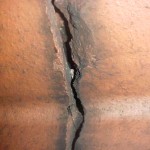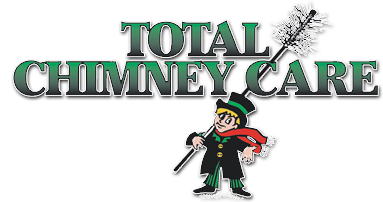 Around this time of year, chimneys see pretty extensive use, especially when the home’s heating relies on a fireplace or wood stove. To help keep everything functioning smoothly and safely, the National Fire Protection Association has mandated annual chimney sweeps and inspections. For chimneys experiencing heavier use, more frequent attention could be of benefit. As a homeowner, you must be involved in the inspection process by asking questions and understanding the basics. Request a video scan as part of the inspection, and if the inspector does not mention the condition of the chimney liner, then ask. As it turns out, cracks and gaps in the chimney liner are quite serious!
Around this time of year, chimneys see pretty extensive use, especially when the home’s heating relies on a fireplace or wood stove. To help keep everything functioning smoothly and safely, the National Fire Protection Association has mandated annual chimney sweeps and inspections. For chimneys experiencing heavier use, more frequent attention could be of benefit. As a homeowner, you must be involved in the inspection process by asking questions and understanding the basics. Request a video scan as part of the inspection, and if the inspector does not mention the condition of the chimney liner, then ask. As it turns out, cracks and gaps in the chimney liner are quite serious!
The chimney serves a vital function for the home, which is to expel toxic fumes produced by the fire out of the home. In an ideal state, hot air filled with smoke and other poisons rises through the chimney safely away from the living space. To assist in the safe transfer of these fumes, every chimney should contain a chimney liner made of heat resistant metal or ceramic. This liner acts as a protective barrier, shielding the chimney and house from the hazardous smoke. When the liner is not sealed all the way up, it can start to cause some trouble.
 Because smoke is a gas, it expands to fill its container. Therefore, when the smoke rises through the chimney and passes by a gapped seam in the liner, some of the smoke will spread out into that space. The first sign of trouble occurs when the smoke hits the interior of the chimney. Non-masonry chimneys are filled with combustibles, meaning a stray ember could actually ignite the chimney and lead to a devastating fire. Aside from this risk, the acidic nature of the chemicals in the smoke will start corroding whatever material it touches, masonry or not. Over time, this acidic deterioration degrades the strength of the individual materials and of the entire structure, which could lead to partial or complete collapse.
Because smoke is a gas, it expands to fill its container. Therefore, when the smoke rises through the chimney and passes by a gapped seam in the liner, some of the smoke will spread out into that space. The first sign of trouble occurs when the smoke hits the interior of the chimney. Non-masonry chimneys are filled with combustibles, meaning a stray ember could actually ignite the chimney and lead to a devastating fire. Aside from this risk, the acidic nature of the chemicals in the smoke will start corroding whatever material it touches, masonry or not. Over time, this acidic deterioration degrades the strength of the individual materials and of the entire structure, which could lead to partial or complete collapse.
The other problem with smoke leaking into the chimney cavity behind the liner involves the smoke traveling back into the living space. Smoke contains a variety of harsh chemicals, including carcinogens like creosote and soot. Additionally, all types of smoke have the invisible toxin known as carbon monoxide. In high enough concentrations, carbon monoxide in a living space can cause loss of consciousness and even death in a matter of minutes. The movement of air back into the house can also reduce the strength of the draft and even reverse it with a large enough leak. This is made evident by smoke stains on the hearth and around the fireplace from smoke backing up into the house.
Fortunately, all of these problems are preventable by resurfacing or replacing a chimney liner with gaps. The only way for a chimney inspector to properly determine the state of the liner is with a video scan commonly known as Chim Scan. Regular inspections only reach as far as the eye can see from inside or from the roof, but a video scan reveals every imperfection. For a video scan inspection of your chimney and some serious peace of mind, contact the chimney experts at Total Chimney Care.
